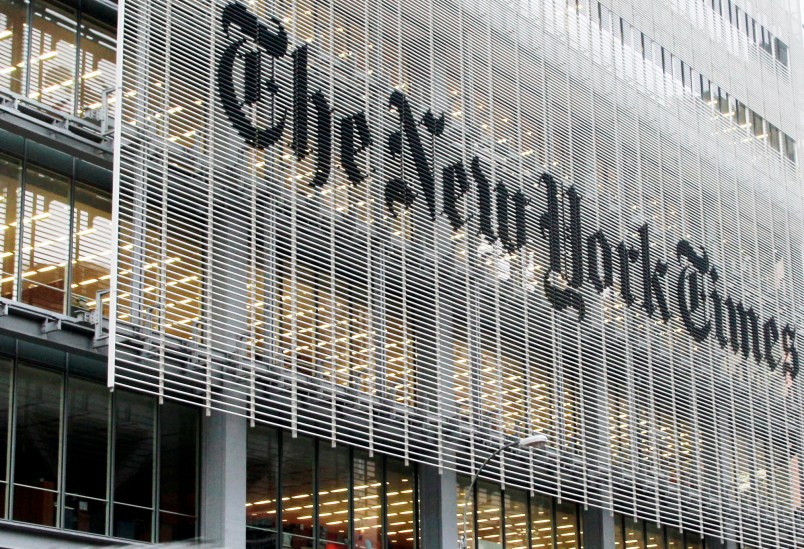New York Times public editor Margaret Sullivan said Monday she agreed with criticism aimed at Alessandra Stanley’s profile of television producer Shonda Rhimes.
Stanley opened up the piece, which was published online last week, with a nod to Rhimes’s use of “powerful, intimidating” black female characters.
“When Shonda Rhimes writes her autobiography, it should be called ‘How to Get Away With Being an Angry Black Woman,'” she wrote, an awkward reference to the new Rhimes-produced drama, “How to Get Away With Murder.”
Stanley also wrote that Viola Davis, the lead actress in that series, is “less clasically beautiful” than Kerry Washington, the star of “Scandal,” the hit show that Rhimes created.
The piece was met with intense criticism, including from Rhimes herself.
Sullivan said those critics were “correct to protest this story.”
“Intended to be in praise of Ms. Rhimes, it delivered that message in a condescending way that was – at best – astonishingly tone-deaf and out of touch,” wrote Sullivan.
Just as she did in an email to TPM last week, Stanley apparently told Sullivan that her piece had been misunderstood by the Twitter community.
“The whole point of the piece — once you read past the first 140 characters — is to praise Shonda Rhimes for pushing back so successfully on a tiresome but insidious stereotype,” Stanley told TPM.
Stanley gave Sullivan a more detailed response later on Monday afternoon, arguing that she “referenced a painful and insidious stereotype solely in order to praise Ms. Rhimes and her shows for traveling so far from it.”
“If making that connection between the two offended people, I feel bad about that,” Stanley wrote. “But I think that a full reading allows for a different takeaway than the loudest critics took.”
Stanley included links to previous articles and wrote that, given her past work, she was surprised by the reaction from readers.
“I didn’t think Times readers would take the opening sentence literally because I so often write arch, provocative ledes that are then undercut or mitigated by the paragraphs that follow,” she wrote.
“Regrettably, this stereotype is still too incendiary to raise even in arguing that Ms. Rhimes had killed it once and for all,” she added.
Times culture editor Danielle Mattoon told Sullivan that at least three editors signed off on Stanley’s article.
“There was never any intent to offend anyone and I deeply regret that it did,” Mattoon said. “Alessandra used a rhetorical device to begin her essay, and because the piece was so largely positive, we as editors weren’t sensitive enough to the language being used.”
This post has been updated.







And, what, exactly, would you say your fucking job is?
Stanley may not have intended to be condescending and racially insensitive, but the profile is such a badly-written little farrago that it is all but impossible to draw any positive conclusion from it.
And it’s apparent that the NYT needs to hire some competent editors.
Of course you didn’t intend to offend anyone. That’s beside the point.
Also? Shonda Rhimes is not the producer of the Viola Davis show. The piece was condescending, insensitive and with a whopping huge error in it that calls into question Stanley’s entire premise.
Heckuva job, NYTimes!
I sat down with the paper yesterday and stumbled upon this story and had the exact same thoughts - WTF was this person thinking? I have a theory about these sorts of things when they happen. The NY Times is a hugely political enterprise with super smart type A personalities everywhere, driven New Yorkers all with a chip on their shoulders and knives out for all kinds of people. I submit that for whatever reason Alessadra was not liked by the higher ups, and someone intentionally let this slip through so that Alessandra could be more easily fired.
Why else would they let something so obvious be printed in the SUNDAY paper, the most widely read edition of the most widely read newspaper??? These people don’t let things get printed that they don’t want printed.
So we, the paying readers, were probably used as part of the politics of the NY Times.
I’m afraid you miss the point: the NYT has a long history of bashing women; i.e., it’s part of their DNA I first noticed it with Chappaquiddick, but even then others were saying that it was long established.